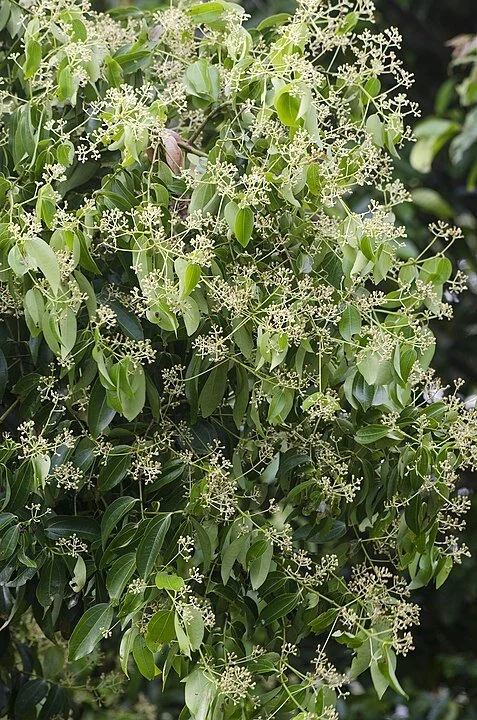Cinnamon Bark Essential Oil
Latin Name: Cinnamomum zeylanicum
Chemistry: E)-Cinnamaldehyde, Eugenol, (E)-Cinnamyl Acetate, Linalool, B-Caryophyllene, p-Cymene
Aroma: Exotic, sweet, warm, spicy
Good for: Respiratory issues, Circulation issues and immune support.
Energetics: Warming, supporting and supportive.
Traditional use: Highly prized and used in ancient rituals of mummification in ancient Egyptian times, it is one of the main ingrains of Kyphi an aromatic incense recipe. It waste be of mysterious origin so given to deities and monarchs as a sign of high respect and honour.
Benefits: Cinnamon bark has a strong air purifying properties and is used in circulatory conditions and digestive conditions(1). It’s anti inflammatory and anti bacterial properties make a great addition to immune supporting blends (2).
Safety Precautions: An oil very high in cinnamaldehyde that is extremely irritating so needs to be carefully used and diluted and never applied directly to skin. Aromatically it is a warming and calming scent that is great for stress relief(3). Beach of its associations with festive seasons and warming comfort food, it tends to be associated with happy occasions to most people.
Cinnamon bark co2 extraction
Cinnamon bark is a spice used to flavour food, drinks, and even medicines. However, it also has many medicinal properties that make it helpful in treating various health conditions.
To extract the essential oil from cinnamon bark using CO2 extraction, the bark is first ground into a fine powder. This powder is then placed in a vessel known as an extractor, which is filled with pressurized CO2. The CO2 is passed through the cinnamon bark at high temperatures and pressures, which causes the essential oils to be released from the bark.
Once the extraction process is complete, the CO2 is allowed to expand, causing it to return to a gas form and leave behind the extracted essential oil. The essential oil is then separated from any remaining plant material and purified to produce pure, high-quality oil.
CO2 extraction is an efficient and effective method for extracting essential oil from cinnamon bark, and it produces a high-quality oil that is free from contaminants and impurities. It is also a relatively clean and safe method, as it does not produce any hazardous by-products or leave any residue in the final product. (cinnamon bark)
Bark vs Leaf
Even though the two essentail oils are derived form the same plant, chemical and therapeutically they have different applications. Both are rich in cinnamaldehyde and eugenol but with different ratios.
Cinnamon bark oil is extracted from the bark of the cinnamon tree and has a strong, spicy aroma reminiscent of the ground cinnamon spice commonly used in cooking. It is a popular ingredient in perfumes, candles, and other scented products.
On the other hand, Cinnamon leaf oil is extracted from the leaves of the cinnamon tree and has a softer, sweeter aroma than cinnamon bark oil.
Both cinnamon bark and cinnamon leaf essential oils are potent and should be used with caution as they can irritate the skin and mucous membranes. Dilute them with a carrier oil before using them topically, and they should not be taken internally.
REFERENCE
1- Purchon N., Cantele L. (2014) The Complete Aromatherapy and Essential Oils Handbook for Everyday Wellness. Toronto, Robert Rose Inc.
2- Inouye S, Takizawa T, Yamaguchi H. (2001) Antibacterial activity of essential oils and their major constituents against respiratory tract pathogens by gaseous contact. Journal of Antimicrobial Chemotherapy 47:565-73.
3- Irani F. (2012). Ayurveda and Ayurveda Aromatherapy. International Journal of Professional Holisitic Aromatherapy. Volume 1 issue 2, 5-9.



